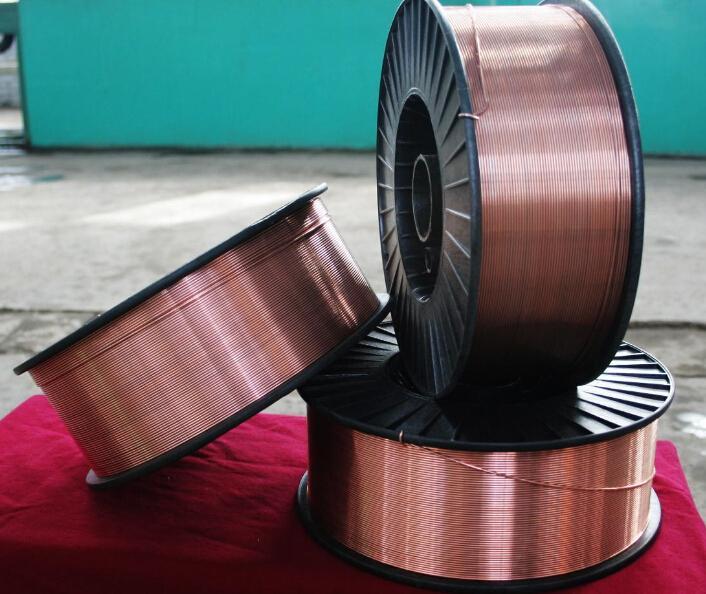Writer:admin Time:2025-04-21 11:42 Browse:℃
In practical applications, welding robots have specific requirements for welding wire selection and process adjustments. Below are the core considerations and optimization strategies:

High-Rigidity Copper-Coated Wire:
Robots typically prioritize drum-packaged welding wire to reduce wire feeding resistance. However, due to the extended length of the wire feeding hose, the wire must exhibit high rigidity and superior copper coating quality. Poorly coated wires are prone to friction-induced coating脱落 (flaking), increasing resistance and causing wire feeding jitter, arc instability, or even system lockups.
Recommendations:
Select wires with uniform coatings and strong adhesion.
Regularly clean the wire guide tubes to prevent copper debris buildup, ensuring smooth feeding.
Flexible Program Control:
The welding torch angle (including the wire-to-workpiece angle) can be precisely adjusted via robot programming, combined with optimized robotic arm posture, to ensure ideal welding positions. For example, specific angles must align with flat, vertical, or overhead welding scenarios.
Wire Feeding Position:
While wires can be clamped on drums or steel plates, drum-packaged wires are better suited for prolonged continuous operation and require high-precision wire feeding mechanisms.
Low-Resistance Design:
Use wire feeding hoses with low friction coefficients.
Avoid sharp bends to minimize power loss during feeding.
Preventive Maintenance:
Inspect wire guide tubes periodically for wear and contamination.
Ensure unobstructed feeding paths by clearing internal debris.
Real-Time Monitoring:
Implement alarms and automatic pauses for wire feeding issues or arc abnormalities. Resume operation only after resolving root causes (e.g., replacing wires or cleaning guides).
Process Adaptation:
Adjust robot parameters (wire feed speed, voltage) based on wire type (e.g., solid vs. flux-cored) to match material-specific welding requirements.
Summary:
To ensure welding efficiency and seam quality, robotic welding systems require high-quality wires, optimized feeding mechanisms, and systematic adjustments supported by regular maintenance. Programmable controls and proactive troubleshooting further enhance performance in diverse welding scenarios.
QQ: 4925567
Phone: +8618115858378
Tel: +86527-88858823
Email: lichao@knt-robot.com
Addr: No. 8 Suhuang Road, Sucheng District, Suqian City, Jiangsu Province